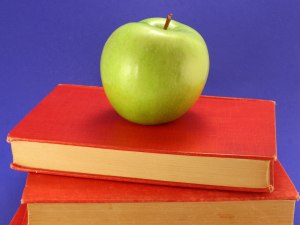Today I have decided to deviate a bit from the brain-based education research, and keep you updated about the changes I am making to our school library program. This school year, I have switched from the elementary library environment to the secondary-level library setting. I am loving every minute of it!
Some changes and events that I have implemented thus far:
- School library needs assessments: I have designed an assessment for both the faculty/staff member and the student to assess their needs and interests. This was a good way for me to quickly gather information about student interests, as well as what the primary purpose of the library has been before my arrival. I’ve been able to gather information about where I need to immediately allocate some of my budget, including periodicals of interest to the vocational and technical education programs at my school. To download a copy of both the student and teacher library needs assessments, please click here: Faculty library survey Student Library Survey
- An urban fiction book club: While my students come from a variety of racial and socioeconomic backgrounds, it was important to find a common ground that most of them share when reading for pleasure. Time and time again, I noticed that many of the books that students choose to check out and read are in the recently dubbed “urban fiction” genre that is currently experiencing somewhat of a renaissance period in the world book market right now. African American and Latino writers are bringing their works of urban teenage life to the forefront of American thought, and my students couldn’t be happier about it. When we return from school, our urban fiction book club will be tackling “Lost & Found,” the first novel in the Bluford High series of books. Next, my students have expressed interest in several Sharon Draper titles, so we will soon see who has written the next selection for our club.

- Breakfast & Books: “Breakfast & Books,” is an event that I started hosting when I first started my career as a school librarian. No matter how big or how small your budget may be, you will most likely always be purchasing books in some format for your library. When these books come in, prior to placing them in a display or on the shelves, invite your faculty for bagels, donuts, and coffee in the library to preview the books. Stand each book up on the table and set an index card next to it with a brief summary or review. Also be sure to include what ages/grades, school subjects, and genres can be associated with each title. This lets your faculty know what’s new and available to both them and the students, as well as continues to foster positive school-wide library experiences.
4. Grants, grants, and more grants: There are a plethora of grant opportunities out there for the eager educator. In terms of this holiday season, I will be working on two YALSA grants that involve the utilization of graphic novels, as well as the possibility of increasing student engagement with technology-based activities both during and after school. While grant writing offers no certain guarantee that you will receive said grant funding, getting your organization’s name out there will only help to draw possible positive connections to you for your future goals.
5. A library planning committee: Now that we are off and running, we need to secure a vision for our school library program that will help guide us to make our planning decisions over the next several years. I have invited all members of our community to take part in our planning committee, including, but not limited to: administrators, faculty members, staff members, students, public librarians from the community (opportunities for collaboration), and elementary/primary school librarians (creating less of a vertical organization and more of a lateral organization). When meeting with your planning committee, always keep in mind the key tenet, “Our library is what we make it to be.” Your vision should assess your library at multiple planning stages, including: “What does our library look and function like now? What would we like it to look and function like in one year? Five years? What are the biggest unmet library needs of our community?” By keeping these thoughts in mind, you’ll be able to help drive the committee to make collaborative, decisive goals that clearly delineate where to go and what path to follow for the positive development of your library program.
So those are my “Big 5” for right at this moment. That is, of course, in addition to the brain-based learning research that is currently taking over our living room and kitchen tables. Stay posted for an upcoming book review of Benedict Carey’s new book, “How We Learn: The Surprising Truth About When, Where, and Why It Happens.”


